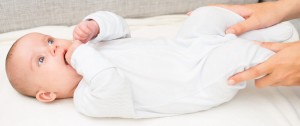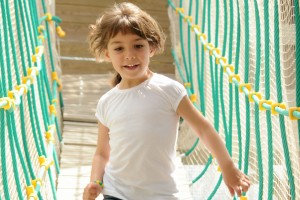Book now online or call (03) 9783 9041.
There are many reasons why Osteopaths treat babies. Some of the more common reasons are parental concerns with their child’s uneven mobility, or generally tense and seemingly uncomfortable babies; and sometimes feeding difficulty where baby seems to struggle for comfort at the breast.
Osteopathy for Breastfeeding Support
Sometimes the birth process may be physically traumatic for the baby which can place strain on certain areas of the baby (shoulders, neck, jaw, head). Osteopathic examination may help to identify and treat the areas as well as provide parents with advice.
If your child requires further breastfeeding support we are more than happy to refer you a local Lactation Consultant (IBCLC) as we recognise the importance of a collaborative team approach to give you the best care possible.
All our staff undertake continued education in manual paediatric care, pregnancy care and lactation support and information.
Plagiocephaly:
An abnormal shape of an infant skull may be referred to as plagiocephaly. Often this involves the flattening of one side of the back of the head. The cause of this may be due to the way the foetus was positioned in the abdomen or may be the result of the nature of labor and delivery.
Consequently it is due to pressure placed upon the soft and malleable skull. This is commonly referred to as primary plagiocephaly. Secondary plagiocephaly develops after birth and is diagnosed later. Babies may also present with torticollis. Torticollis is a shortening of neck muscles which creates the head and neck to be tilted to one side.
Premature babies have an increased risk of developing plagiocephaly, as the bones that make up the cranial vault are very soft and malleable. A prolonged or difficult delivery, perhaps also with the use of forceps or assistance may lead to an altered shape in the head due to the forces of birthing.

The number of osteopathic treatment depends on the nature and severity of the condition.
Often it is encouraged that the parents continue to reposition the baby’s head to avoid lying on the flat side for a prolonged time. Tummy time may also be encouraged and safe baby-wearing ideas discussed.
References:Carreiro J. E. (2009). Pediatric Manual Medicine: An Osteopathic Approach. Churchill LivingstoneElsevierDeformation Plagiocephaly, Royal Children’s Hospital. Retrieved from
http://www.rch.org.au/uploadedFiles/Main/Content/plastic/Deformational_Plagiocephaly.pdf
Cramp/growing pains:
Growing pain in children and adolescents is muscular pain most commonly along the calf, at the front or behind the knee. They can involve both legs. It often presents in children between the ages of 3-5 years and 8-11 years. Both boys and girls may be affected.

Symptoms may include:
- Pain can present as an ache or throb
- Pain presents at the end of the day
- Pain is commonly located in the calf, at the front and behind the knee
- Does not typically affect the child’s activities of daily living (ie they remain able to run and move legs with no aggravation)
- May wake up with the pain
- Pain can be random in nature
- Headaches and abdominal pain may occur with growing pains
Possible causes of growing pains
Muscle fatigue: Children are often involved in sports and exercises that can cause muscle fatigue and soreness.
Poor posture or altered biomechanics: Flat feet, poor footwear or inadequate posture when sitting or standing an often place excess stress on certain areas of the body.
Osteopathic treatment may help promote joint range of movement, stretch tight muscles and give exercises to help treat the affected areas. Heat packs and gentle massage to the affected muscles may be useful to relax the muscles. We may provide advice regarding correct posture and assess the biomechanics of the foot, knees, hips and spine.
References:Growing pains. (2015). Retrieved from https://www.betterhealth.vic.gov.au/health/healthyliving/growing-painsGrowing pains. (1998-2015). http://www.mayoclinic.org/diseases-conditions/growing-pains/basics/definition/con-20029782Moeckel, E., &Mitha N. (2008). Textbook of Pediatric Osteopathy. Churchill Livingstone Elsevier


